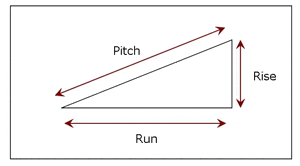There are many things to take into account when selecting a new roof system. These include pitch, cost, durability, aesthetics, architectural style, and the type of structure you are covering.
Pitch is the angle of the roof’s incline, measured in inches per foot. For example, a 4 in 12 pitched roof means that for every 12 inches of horizontal run, there are 4 inches of rise in height.

Cost on a new roof is made up of two factors, material costs and labor costs. Be sure to include both when evaluating different types of roofing. For example, roofing shingles come with a variety of warranties, 25 year, 30 year and lifetime, but the labor cost to apply is the same. Because of this, it may actually be less expensive over the life span of the roof to install a more durable product.
Durability is a key factor in maintenance and cost. Roofing that is easily damaged, may need to be repaired frequently or possibly replaced. Be sure to look at the warranty of various roofing materials, as it is an indication of how long your roof will last.
Aesthetics are something to consider when selecting a new roof. Because the roofing area may be up to 50% of the exposed exterior of your home, you should select roofing that coordinates with your siding and will provide a timeless look.
Architectural styling is something that is not frequently considered when working on a budget, however to do the job right, you should select a roofing material that fits with the style of your home. For example, wood shakes on a contemporary style home may not achieve the look and feel you desire.
Types of Roofing
Composition Shingle
The most common roofing material in North America, composition (asphalt) shingles consist of an organic or fiberglass core impregnated with asphalt and coated with mineral granules to add color, texture, and weight. They are suited for roofs with a pitch of 4 in 12 or greater, but may be applied to roofs with a 2 in 12 pitch using special installation methods. Composition Shingles are flexible and can wrap all roof shapes and contours. When buying, you should compare warranties as they are an indicator of the life of the shingles. There are multiple styles with the most popular being architectural, multiple-layer shingles that replicate the look of wood or slate and are available in 2 or 3-tab varieties.
Metal Roofing
Traditionally thought of as a low-pitch roofing material or limited to agricultural buildings, modern metal roofing has become a popular alternative for steep-slope roofs. It is manufactured in a wide variety of colors, installs easily, is practically maintenance free and has a green product life cycle (frequently made from recycled steel and can be recycled at the end of its life). The variety of numerous metal panel shapes can achieve looks varying from classic standing-seam to more modern and contemporary looks. In addition, metal roofing has a greater resistance to adverse weather, a long life span and is relatively low cost.
Wood Shingles & Shakes
Shingles are cut to a specific size and smooth finished, while shakes are irregular and rough-textured. Wood gives homes a natural look but requires more maintenance to protect it from the elements. While durable when properly maintained, overall the costs associated with installation and maintenance are drawbacks.
Composites
Many new types of roofing have emerged as alternatives to traditional materials. Predominantly designed to look like slate or wood, they eliminate the drawbacks associated with the natural materials, while having significant durability. An example of a composite roofing material is synthetic slate. Made predominantly of rubber and plastic, it maintains all the aesthetics of real slate without the weight and fragility.
Rubber Rolled Roofing
Rolled rubber roofing, or modified bitumen roofing, is heat-welded, asphalt adhered or installed with adhesive and is most common for flat or low pitch roof applications. The seams are sealed by melting the roll with heat, hot mopping it with asphalt, or by using an adhesive to mechanically adhere the seams. This product is predominantly found on commercial buildings.
Be sure to consider these factors and types before selecting the roofing you plan to use. If you need help, do not hesitate to stop in and speak with a Curtis Lumber salesperson.
